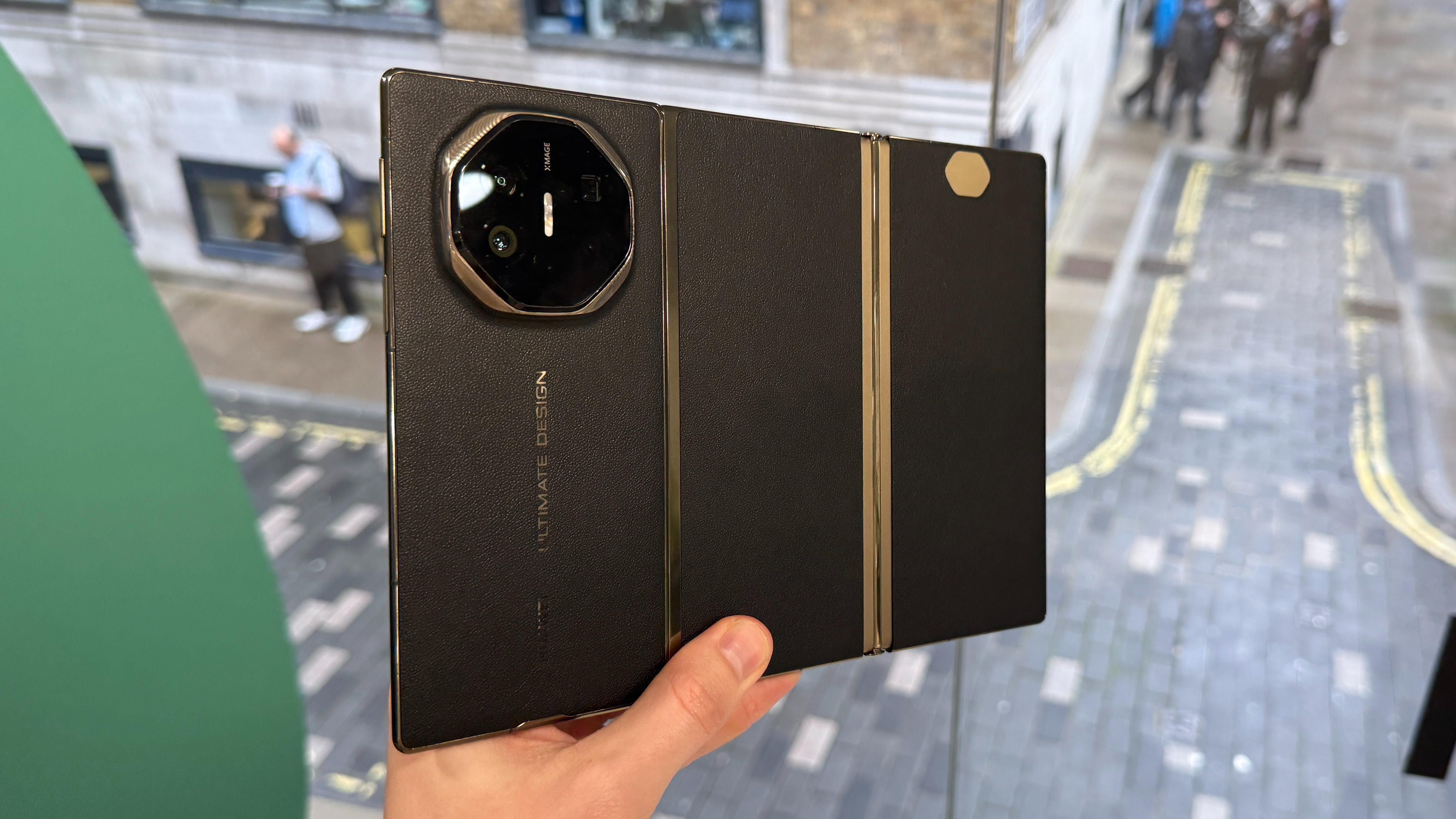
I only recently learned that the popular idiom "seeing is believing" is a gross misreading of Thomas Fuller’s original quote. The 17th-century English clergyman *actually* said "Seeing is believing, but feeling is the truth" (thanks, Reddit scholars), and that slightly amended version rather nicely sums up my feelings towards the Huawei Mate XT.
I had of course read about (and seen pictures of) the world’s first commercially available dual-screen, tri-folding smartphone before visiting Huawei’s UK PR agency for a recent product launch. But it wasn’t until I got hands-on with the Mate XT at this same event that I realized I was wrong to dismiss Huawei’s headline-grabbing phablet as an expensive gimmick (and yes, I know Fuller’s quote refers to *emotional* feeling, but humor me).
When the Mate XT hit shelves in China earlier this year, I rather snarkily wrote that Huawei's tri-folding phone is so expensive you could buy four PS5 Pros (or 5,620 Twinkies) for the same price. That continues to be true, but having now held the real, actual product in my real, actual hands, I can see why the Mate XT supposedly got over 3 million preorders in its home market.
@techradar ♬ original sound - TechRadar
For those unfamiliar, the Huawei Mate XT is an entirely new type of folding phone – rather than folding once, like a book, it folds twice, like a three-page brochure (incidentally, I initially thought it was wrong to call this a 'tri-folding' device given that only two of its screens fold, but I’ve since come around to the designation). The USP here is obvious; you get three displays for the price – in portability terms – of one.
The Mate XT measures 6.4 inches when collapsed and a whopping 10.2 inches when fully unfolded. For context, that makes it some 2.6 inches larger than the single-hinged Samsung Galaxy Z Fold 6 and not far off the size of Apple’s iPad 10.9 (2022) at full stretch.
When I first read about the Mate XT, I understood the benefits of its Z-shaped form factor, but I assumed it would feel flimsy and its two creases would be too distracting to ignore. In both cases, I was glad to be proven wrong.



This is a sturdy-feeling phone with hinges that can stay in place at any angle. It doesn’t flop open or closed and it uses magnets to stay shut when you want it to be. I didn’t get to stream any content on the Mate XT, but at first glance, its creases, while visible, are comparable to that of the Honor Magic V3, which we praised in our Honor Magic V3 review for being “one of the shallowest and least noticeable creases of the current foldable crop.” From a design standpoint, this thing is a marvel.
Get daily insight, inspiration and deals in your inbox
Sign up for breaking news, reviews, opinion, top tech deals, and more.
I wasn’t able to put the Mate XT’s power credentials to the test, but it’s an impressive beast in terms of specs. It runs on a Huawei-exclusive Kirin 9010 chipset and 16GB RAM, with storage options ranging from 256GB all the way up to 1TB.
The phone’s 5,600mAh battery is similarly formidable (on paper), and it supports 66W wired charging and 50W wireless charging when paired with Huawei’s SuperCharge charger.

On the cameras front, the Mate XT gets a three-lens rear setup comprising a 50MP main lens, a 12MP ultra-wide lens, and a 12MP periscope lens, while an 8MP selfie camera rounds out Huawei’s three-screen photography offering.
What you’re getting here, then, are standard flagship foldable specs in a decidedly un-standard (and much more useful) design package. Foldables have long promised to deliver tablet-style utility in a much more convenient form factor, and while we’re big fans of the Galaxy Z Fold 6, Google Pixel 9 Pro Fold, OnePlus Open, and more of today’s best foldable phones, these products still feel like awkward halfway houses between phone and tablet, rather than bona fide problem solvers.
The Huawei Mate XT is currently only available in China, so we’re unlikely to put it through our full review process any time soon, but as a window into the potential future of foldable devices on this side of the world, it’s a supremely exciting device.
Indeed, Samsung is rumored to be developing its own tri-folding phone – one that could launch as soon as 2025 – so here’s hoping we’ll get more hands-on time with a variety of tri-folding devices in the coming months.
You might also like

Axel is TechRadar's UK-based Phones Editor, reporting on everything from the latest Apple developments to newest AI breakthroughs as part of the site's Mobile Computing vertical. Having previously written for publications including Esquire and FourFourTwo, Axel is well-versed in the applications of technology beyond the desktop, and his coverage extends from general reporting and analysis to in-depth interviews and opinion. Axel studied for a degree in English Literature at the University of Warwick before joining TechRadar in 2020, where he then earned an NCTJ qualification as part of the company’s inaugural digital training scheme.